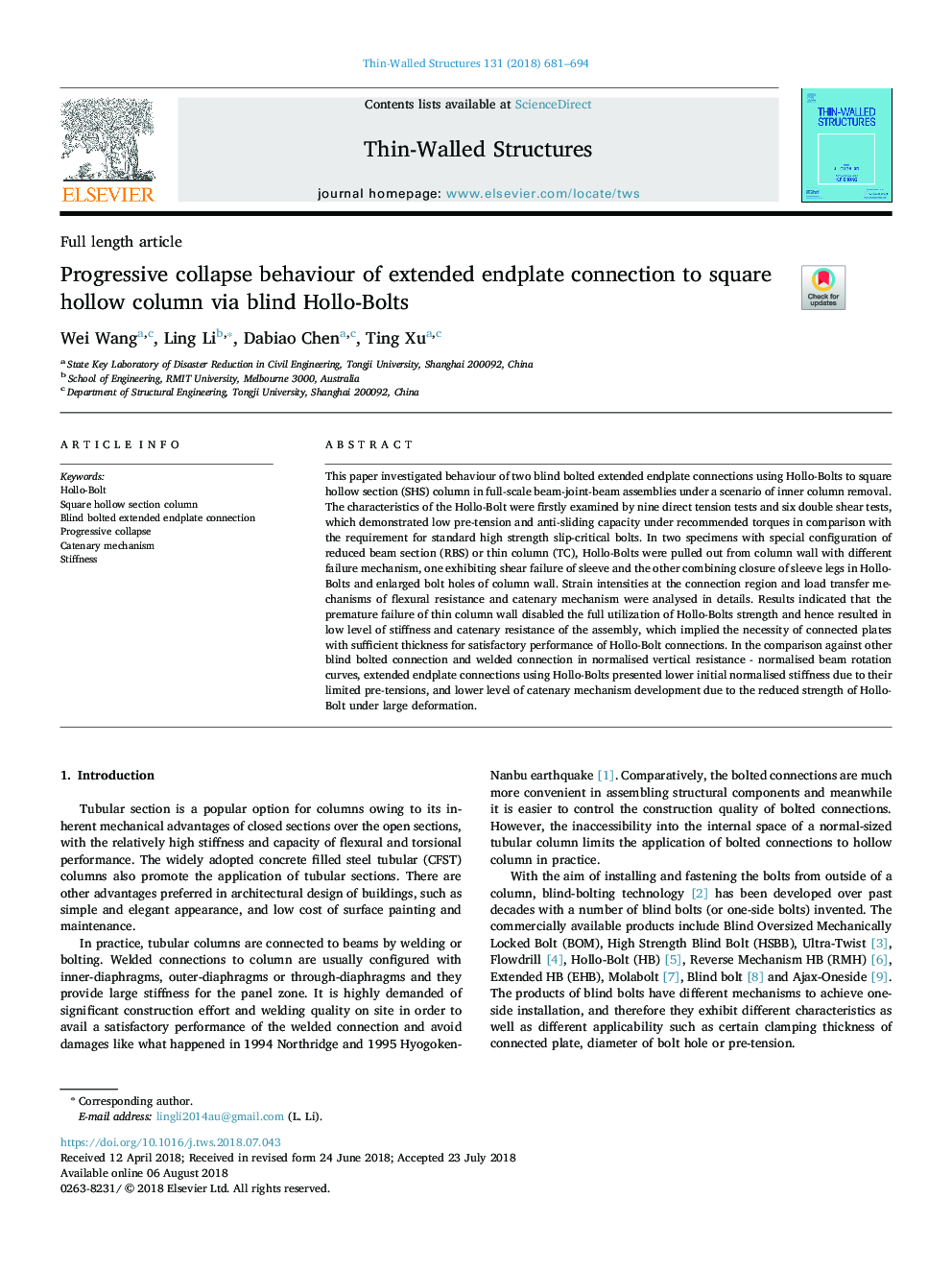| Article ID | Journal | Published Year | Pages | File Type |
|---|---|---|---|---|
| 11001324 | Thin-Walled Structures | 2018 | 14 Pages |
Abstract
This paper investigated behaviour of two blind bolted extended endplate connections using Hollo-Bolts to square hollow section (SHS) column in full-scale beam-joint-beam assemblies under a scenario of inner column removal. The characteristics of the Hollo-Bolt were firstly examined by nine direct tension tests and six double shear tests, which demonstrated low pre-tension and anti-sliding capacity under recommended torques in comparison with the requirement for standard high strength slip-critical bolts. In two specimens with special configuration of reduced beam section (RBS) or thin column (TC), Hollo-Bolts were pulled out from column wall with different failure mechanism, one exhibiting shear failure of sleeve and the other combining closure of sleeve legs in Hollo-Bolts and enlarged bolt holes of column wall. Strain intensities at the connection region and load transfer mechanisms of flexural resistance and catenary mechanism were analysed in details. Results indicated that the premature failure of thin column wall disabled the full utilization of Hollo-Bolts strength and hence resulted in low level of stiffness and catenary resistance of the assembly, which implied the necessity of connected plates with sufficient thickness for satisfactory performance of Hollo-Bolt connections. In the comparison against other blind bolted connection and welded connection in normalised vertical resistance - normalised beam rotation curves, extended endplate connections using Hollo-Bolts presented lower initial normalised stiffness due to their limited pre-tensions, and lower level of catenary mechanism development due to the reduced strength of Hollo-Bolt under large deformation.
Related Topics
Physical Sciences and Engineering
Engineering
Civil and Structural Engineering
Authors
Wei Wang, Ling Li, Dabiao Chen, Ting Xu,
